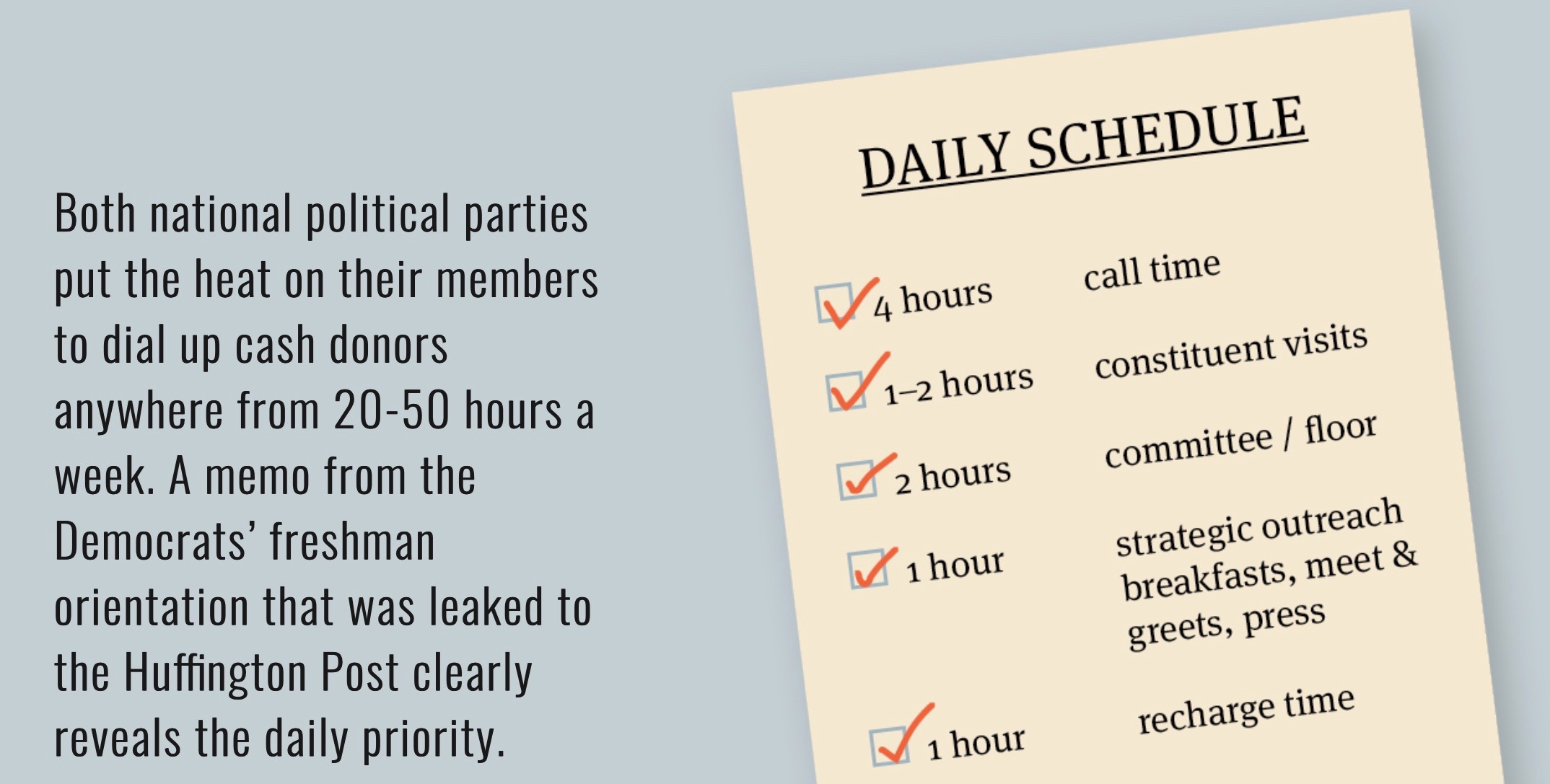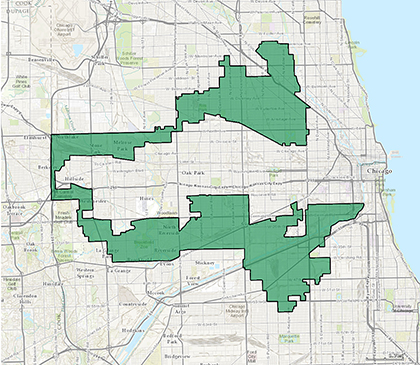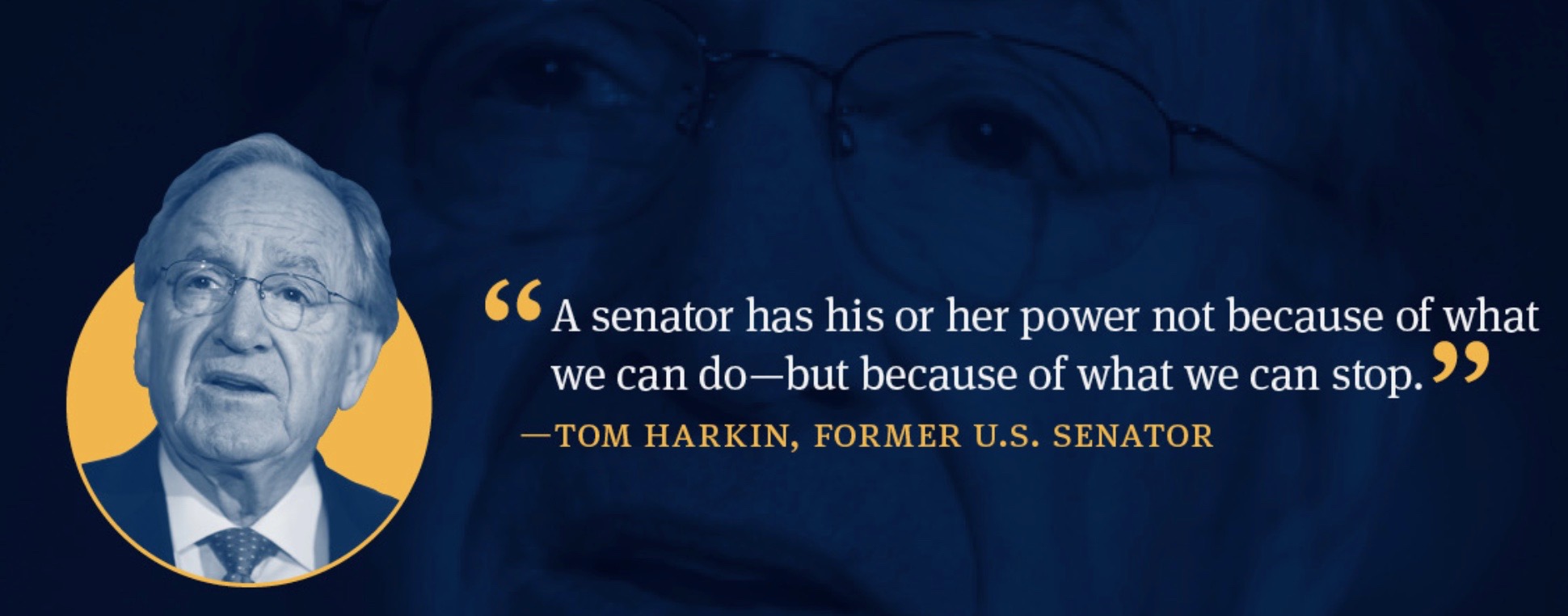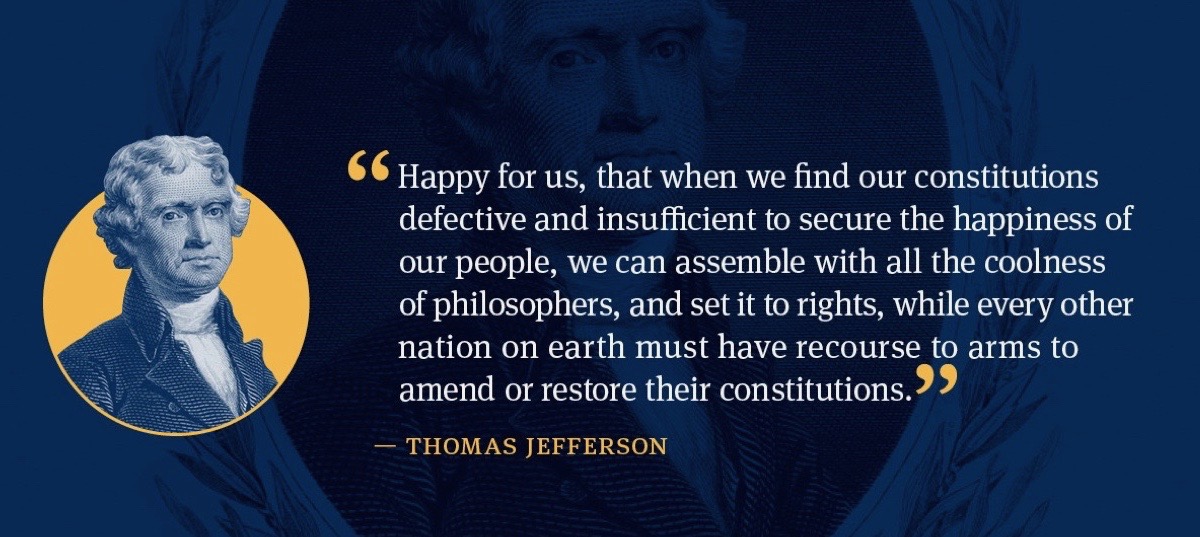The Second American Revolution: 5-Minute Boot Camp For Unrigging Our Government

I’ve got some good news and some bad news. And once we put it all together, it’ll be news you can use — an easy way to join the Second American Revolution, now in progress.
First, the bad news: You are being violated by your own government. Hustled and conned. We all are. Our voices and our votes. Our tax dollars, too.
On a piece of parchment that birthed this country, our founders emphasized that lawmakers would derive “their just Powers from the consent of the governed.” That’s us. But those words have become a bad joke. We do not truly grant our “consent” anymore — and the reason is because our system is rigged.
I began learning about this seven years ago, when I left a career in politics and started a research-based project to find out why so many of the good candidates I knew became ineffective once in office.
The answers were disheartening, to say the least. But here’s the good news: It doesn’t have to be this way. And in recent years, an interconnected network of everyday Americans has been growing and pushing back all across the country. Quietly, diligently, relentlessly — and they’re achieving results.
So much has happened in this new reform revolution, and now seemed like a good time to distill much of it into a bite-sized summary. A big bite. Once you’ve read it, you will know:
- How the system has been screwing Americans - and how Americans are fighting back with solutions.
- Big reform victories that have been won, and future wins that are in the works right now.
- The easiest ways for you to join the fight.
Let’s start big picture. Take a little journey with me.
A Rigged System That Drives Hyper-partisanship And Derails Productivity
I first tapped out those 10 words in 2014 as I began writing a book about our defective US Congress. Public confidence in Congress sat at seven percent — a record low since Gallup had begun asking the question in 1973.

Today, it’s four points higher. In other words, nine out of 10 Americans do not have faith that our elected lawmakers can solve problems. No matter what your issue and no matter which party controls Capitol Hill, the ball seldom gets moved down the field.
As I began my research for Unlock Congress, my theory was that our government had become feckless due to a set of wrongheaded rules that had been exploited by officeholders for decades to rig the system. Among them:
- The corruptive — yet legal — influence of big money
- Single-member congressional districts that are gerrymandered (rigged) by the very politicians running to retain their seats
- Closed primary elections
- Arcane and unconstitutional blocking rules in the US Senate
I read stacks of books and spoke with activists and members of Congress from across the country. One of those activists, whom I’d sought out at the Library of Congress, urged me to stop describing our elections and governance as “rigged.” He thought the term was charged and disrespectful. But that was the whole point! I wasn’t blaming the individual players. My goal was to call out a fixed game.
Unlock Congress was published on Tax Day, 2015. The words “rig” and “unrigged” appear more than 30 times. I made it clear: “We must unrig, in order to unlock.”
To be honest, it’s a little scary calling BS on your government under a byline. Thankfully, the theory and descriptions were well received and started popping up in media, academia and even reform efforts in other states.
By 2018, Represent.Us had convened a national summit in New Orleans and asked me to appear. Its title? “Unrig the System.” It was a wow moment, and a great conference.
More and more Americans are warming to the fact that a medley of causes conspires to rig our government. Making a single repair will not instantly lift the derailed train back onto the tracks. The extent of the damage is extreme.
Again, it doesn’t have to be this way. So here we go. Defect by defect and solution by solution. One by one.
The Money Flood
In the New Testament, the Apostle Paul described money as “a root to all kinds of evil.” In the campaign world, it is described as “the mother’s milk of politics.”
On Capitol Hill and in campaigns across the country, a river of money flows through every hour of every day. Candidates and members of Congress spend up to 50 hours a week with phones glued to their ears. They are telemarketers, begging for big dollars from those who can afford it.

The total amount of cash spent on congressional elections rose from $1.7 billion in 2000 to $4.2 billion by 2016. And in this last election, we saw a record-breaking jump of $1.5 billion to a total of $5.7 billion.
The proportion of Americans who shell out more than $10,000 per election cycle is .01 percent. And if you think they don’t get anything in return, I’ve got some faulty infrastructure to sell you.
Tim Wirth (D-CO) served in the US House and Senate from 1975-1993. In 2014, Wirth looked back on his years fundraising while in office:
“That was kids’ play compared to what goes on now…Extortion’s one part of it. Getting paid for political outcomes is a way of describing it. It’s basically corrupt. It is legalized corruption. And people aren’t going to say that. They will recoil when you say it, but it’s true.”
But we don’t need to rely on qualitative descriptions to know how money rigs the game. In a 2014 research study, Martin Gilens and Benjamin Page analyzed 1,779 policy decisions over 20 years. They discovered that the preferences of “economic elites” — defined as Americans in the 90th income percentile — were 15 times as important in determining policy outcomes as ordinary folks.

Americans are onto it. A survey taken right after the 2018 midterms revealed that 75 percent of voters placed “ending the culture of corruption in Washington” as their most important issue.
Now add Super PACs and “dark money” to the equation.
“Super PACs” are political action committees that may raise and spend unlimited sums of cash contributed by corporations, unions and individuals. Two major court decisions in 2010 upheld these rights. As long as Super PACs are spending their warchests on political activities that are “not coordinated” with campaigns, anything goes. Hundreds of millions of dollars that rig the system right in plain sight. Well, not all of it.
For several years now, massive amounts of money have flowed into the coffers of non-profit advocacy groups with no requirement of disclosing who forked over the cash. This is “dark money.”
In the 2018 cycle, $405 million was raised and spent by dark money groups — a 33 percent increase over 2016. Forty-two percent of that total was spent on TV ads in the midterms. So not only are the richest Americans paying to rig the system — half of the cash dumps happen behind dark curtains. We are blind to the riggers.
It doesn’t have to be this way.
Reversing the Money Flood Tide
The solutions we need to puncture the power of big money politics are much the same as they were five years ago. But their popularity is growing, and when enough of us push together, that’s when we get big change. That’s what this article is all about.
- Matching Funds for Small Donations: Candidates may voluntarily opt into a system where small dollar contributions get leveraged with public matching funds ($150 would turn into $900 at a 6-1 match ratio). In this way, all voters are empowered — regardless of net worth. Candidates are forced to connect with a broader network and their time spent fundraising is dramatically slashed.Several states and cities use this system now. New York’s City Councilhas been doing it for decades, and Brennan Center research clearly indicates how the rules have increased both participation and fairness.
- Disclosure of Donors: Legislation that requires Super PACs and advocacy organizations to report who’s giving them money to influence elections. Last year, a C. District Court decision allowed for the requirement of big donor disclosure. Now Congress must pass a law. If we want to disinfect, we’re going to need to let some light in.
- Pass the “Democracy For All” Constitutional Amendment: Also known as H.J.Res.2, the 28th Amendment would overturn Citizens United and other court decisions by allowing Congress and the states to “regulate and set reasonable limits on the raising and spending of money by candidates and others to influence elections.” Democracy For All would outlaw Super PACs from raising and spending billions of dollars to drown out the rest of our voices.
Rigged Races
I met the folks at FairVote back in 2013. For 25 years, they have been analyzing and working to solve the problem of unfair representation in the US House. This fundamental unfairness is caused in large part by winner-take-all elections in gerrymandered, single-member districts.
In simplest terms, this means that politicians and parties draw the lines in their own districts (picking their voters), and because only one representative is elected per-district, up to 49.99 percent of voters can punch the ballot for a losing candidate — and have zero representation.

But the races are rigged even before the general elections begin. Due to closed party primaries and “sore loser” laws that prevent losing primary candidates from running as independents in the general, the ideological bases of each party control who gets nominated.
What it all adds up to are foregone conclusions before voters even go to the polls. In 2016, FairVote made predictions in 374 of our 435 House seats. They were 100% correct. So, in 85% of our elections — purportedly based on the principle of “one person — one vote” — millions and millions of votes just don’t matter. Open-mindedness, moderation and compromise die before the ballots even get cast.
It doesn’t have to be this way.
- Require Independent Districting Commissions In Every State: These are non-partisan committees that draw districts as fairly as possible for voters. Right now, a process of genuinely independent district-drawing exists in: AZ, CO, CA, HI, ID, MI, NJ and WA. We need far more states to fully embrace and adopt.
- “Fair Representation Voting”: In this system designed by FairVote, multi-seat “super-districts” are created and then voters use Ranked Choice Voting to rank their selections from a full list of candidates. Through this method, second and third choices matter in determining which candidates will represent the district (watch how it works here). With Ranked Choice Voting in super-districts, every person’s vote counts, “spoiler” candidates are eliminated, and Americans of all backgrounds and political ideologies have a voice and some degree of representation.
Whether it’s the minuscule number of moderates in Congress, or the record high distortion of American vote totals in House (and presidential) elections, the math alone tells us the system is just plain rigged.
Primary elections that lead to two-nominee, winner-take-all general elections in single-member districts, joined with the practice of political gerrymandering, comprise a defective method of choosing our US representatives.
Get rid of the rig.
Senate Standstill: The Filibuster
Let’s get right to it. The filibuster and cloture rules in the US Senate, which require 60 votes to even get to a vote on legislation, are NOT in the Constitution. Moreover, their creation were an accident of history. As a result, one Senator can freeze all progress in a country of 330 million people.

But beyond its goofy evolution and wildly disproportionate blocking power, many Americans argue that these rules are actually unconstitutional.
There are five circumstances designated in the Constitution where more than a majority of votes are required. Passing legislation and confirming judges and executive branch nominations are not among them.
The Senate and the House are permitted to write new rules at the beginning of each congressional session. But the cloture rules that the Senate has ginned up violate the entire democratic principle of majority rule! This is laid out in black in white in both the Quorum and Presentment Clauses.
In Federalist 58, James Madison explained very simply what it would mean if more than a majority vote was required: “The fundamental principle of free government would be reversed.”
Common Cause filed a lawsuit against the US Senate in 2012, arguing why the filibuster and cloture rules are unconstitutional. In 2014, the US Supreme Court refused to hear the case.
However, since 2013, Democratic Senate Majority Leader Harry Reid ended the filibuster for appointments and Republican Senate Majority Leader Mitch McConnell ended it for Supreme Court confirmations. These were both historic actions.
All that remains is to eliminate these unconstitutional rules as they apply to passing laws — the primary responsibility of Congress.
In 2017, Senator John McCain described colleagues of his who wanted to “go nuclear” and eliminate the 60-vote rule as “stupid idiots.” And there are folks on both sides of the aisle who are afraid that a majority vote in the Senate would allow big things to happen that they might not like.
But that’s how it’s supposed to work. Emmet Bondurant, a constitutional scholar and lead counsel for the Common Cause lawsuit, puts it this way:
“The House and Senate might pass unwise legislation by a vote of a simple majority of both Houses, either in the heat of the moment, or based on assumptions that proved to be unfounded. But elections should have consequences. If a majority of the electorate, or a majority of their representatives should decide later that the legislation was a mistake, the legislation could be amended or repealed entirely by a simple majority vote of both Houses. The will of the majority could not be thwarted or vetoed by a minority of Senators.”
Indeed. It doesn’t have to be this way.
As the 2020 presidential primaries are just starting to take shape, ending the filibuster is already a part of the discussion, and there are candidates who have said they are open to the possibility. But it will take plenty more pressure in order to get to the next level. That’s where we come in.
A System Designed To Be Improved
In 2013, pollsters from the Obama and Romney campaign did a joint survey that revealed that 54 percent of Americans agreed with the following statement: “After 230 years, the Constitution can’t provide guidance for many of the problems we face now.”
The assertion itself sounds ironic to a super-nerd like me. Of course, I’m the first one to agree that we need to reform the rules — and that may include the amendment process. But at the same time, the very Constitution that the poll respondents were criticizing is the same one that actually allows for the answer. Thomas Jefferson expressed this well in his letter to letter to C.F.W. Dumas in 1787.

And this is why I like to call the reform movement going on right now: “The American Revolution, Part II.” Jefferson described the fruits of the first one, wherein hundreds of thousands of patriots took up arms and risked their lives in order to author the historic charter known as the US Constitution.
Now, 230 years after its ratification, 90% of Americans find our government to be defective. In particular, the First Branch.
When a product is defective, we’re able to exercise a warranty or flash a receipt and get a new product or refund. But in our republican form of government, the Constitution is our warranty. We’re not going to get our votes or our tax dollars back, but we can take action to reform parts of the system. We can change the rules in order to unrig the game. And that’s what’s happening right now.
Rise of the Reformers
We have an awful product. And we know that we need to reform the rules in order to restore the system. Now let’s catch up on some of the great work — and wins — that reform organizations have been earning on the ground. We’ll close after this with some information on what you can do to join the fight.
- Today, the US Supreme Court hears arguments on two gerrymandered maps — one rigged by Republicans in North Carolina and the other rigged by Democrats in Maryland. It could be a landmark decision. For years the Court has wanted to have a way to actually measure how unfairly a map has been drawn. It is due to a new mathematical tool, the “Efficiency Gap,” that these cases have been able to get heard in more courts. The Efficiency Gap was developed by Nick Stephanopoulos and Eric McGhee, and it is also a tool that independent districting commissions are using as they try to draw new and fairer maps.
- Common Cause filed the lawsuit in North Carolina, and with daily staff working in 25 state capitols, they have also successfully pushed for public financing reforms, automatic voter registration and steps toward a national popular vote interstate compact in presidential elections.
- Voters in four states passed measures in 2018 to rein in partisan gerrymandering: Colorado, Utah, Missouri, and Michigan.
- FairVote won a huge victory when Maine enacted ranked choice voting in a 2016 initiative and was able to retain it in 2017. The Committee for RCV on the ground in Maine played a huge role in this process.
- All Voters Vote, a Florida group, has submitted petitions for a ballot initiative that would open up its primary elections to all 13 million of the state’s voters.
- Campaign finance reforms passed in 2018 in Baltimore, Denver, Phoenix and other cities to ban corporate donations, use public matching funds and require more disclosure of donors.
- Issue One has recruited and mobilized a “ReFormers Caucus” of 200 former members of Congress - split evenly between Democrats and Republicans. This bipartisan behemoth is backing proposals that would fix the gridlocked Federal Elections Commission and also keep foreign money out of our elections.
- A 2017 study by Eric McGhee and Boris Shor revealed that California’s reforms — which include open primaries, independent districting, and term limits — have increased lawmakers’ capacity to move to the center.
- Open Primaries has coalesced a movement to change state parties’ rules that limit voters’ choices in primary elections.
- The U.S. House passed the H.R.1 “For The People Act” on March 8, 2019. The most comprehensive reform package ever introduced in Congress, the law would: create federal matching funds for small dollar contributions, require non-partisan, independent redistricting commissions in all states, require “dark money” political groups to disclose their donors, expand voter registration and early voting, and strengthen the ban on foreign donations. H.R.1 also expresses support for an Amendment to the Constitution that would permit Congress and the states “to regulate and set reasonable limits on the raising and spending of money by candidate and others to influence elections.”
If you’re thinking that the H.R.1 bill sounds like it has little chance of getting through the Senate and signed by the President, you’re right on the money. But this is where we come in.
Whether it’s a big reform package or smaller individual bills, the onus is on us to keep putting new measures on state ballots and keep pushing our elected officials to get it done. No reform is impossible as long as voters are leaning into what they want.
In This Together
Above I promised that you would possess three useful pieces of information by the end of this article. You have the first two. The third is the easiest for me to write, for it is up to you.
Don’t be intimidated or be worried that it’s going to be a huge commitment that sucks all the time out of your life. It won’t (unless you want it to).
Here’s the best part: You’ve already joined the fight by taking a few minutes to read this. Reforming the rules, first and foremost, is about having far more Americans understanding how the system is violating us, and what we can do about it.
You now know this. You can share it with your friends. You can ask candidates whether or not they support specific reforms before you vote. You can put the heat on politicians.
If you want to get more involved, you can reach out to any of the great organizations that are on the ground making things happen every day. There are hundreds. Several are linked in this article, but here I’ll winnow it down to four that may be easiest to engage with and also follow progress in real time:
- RepresentUS (chapter map)
- COMMON CAUSE (Democracy Wire)
- NEW AMERICA (national network)
- INDEPENDENT VOTER PROJECT
Conclusion: Comrades In The Second American Revolution
What started for me back in 2013 as a deep frustration and curiosity about why our government was so defective, turned into mission that became quite personal. Along the way, it’s been amazing to meet so many like-minded advocates. It’s a big network, yet it feels like a family.
Lawrence Lessig’s terrific book, Republic Lost, influenced my early research on the money. Then Larry included content from my book on unrigging congressional districts in his second edition. Not long after, he told me it led to the launch of his new non-profit: Equal Citizens. He no longer want to exclusively work on the campaign finance issue.
Represent.Us also added redistricting reform to its anti-corruption agenda. Its founder, Josh Silver, joined my podcast to talk about their annual summit and all of the progress they were making.
Former Senator Adlai Stevenson III convened a group of advocacy organizations in Washington to coordinate ongoing reform efforts. Adlai had reached out to ask for my feedback on congressional solutions. After becoming a Senior Fellow at the Stevenson Center on Democracy, I got to work with many of those same reform champions referenced above.
In 2017, a former CEO, Katherine Gehl and Harvard professor Michael Porter released a paper which listed those same stubborn drivers of dysfunction that I’d identified. They framed American politics as a failing industry due to lack of competition, telling Fortune: “The parties have rigged the electoral process to guarantee division and disincentivize problem solving and progress.” Precisely. Way to go.
I had similar experiences as I started teaching on two college campuses. Several universities were adopting Unlock Congress into their curricula, while at the same time I was welcoming other reformers into my own classroom. The students got it — and many of them were already involved!
All of us keep on bumping into each other because we have a common mission. And the same thing applies to activists and volunteers across the country.
While this movement has been gaining traction, there is no question that we need to ramp it up. Too many important issues can’t be resolved until we first unrig the system and reclaim our democracy. How long will it take? We will know the answer to that question when enough of us sign up for this Second American Revolution.
In this new uprising, we don’t need to take up arms. We need only to take in knowledge, consider it, communicate it, and vote it. Thanks for taking the first step.
Over two centuries ago, Americans sacrificed greatly so that this country could independently shape a historic new form of government.
It’s our turn to save it.





